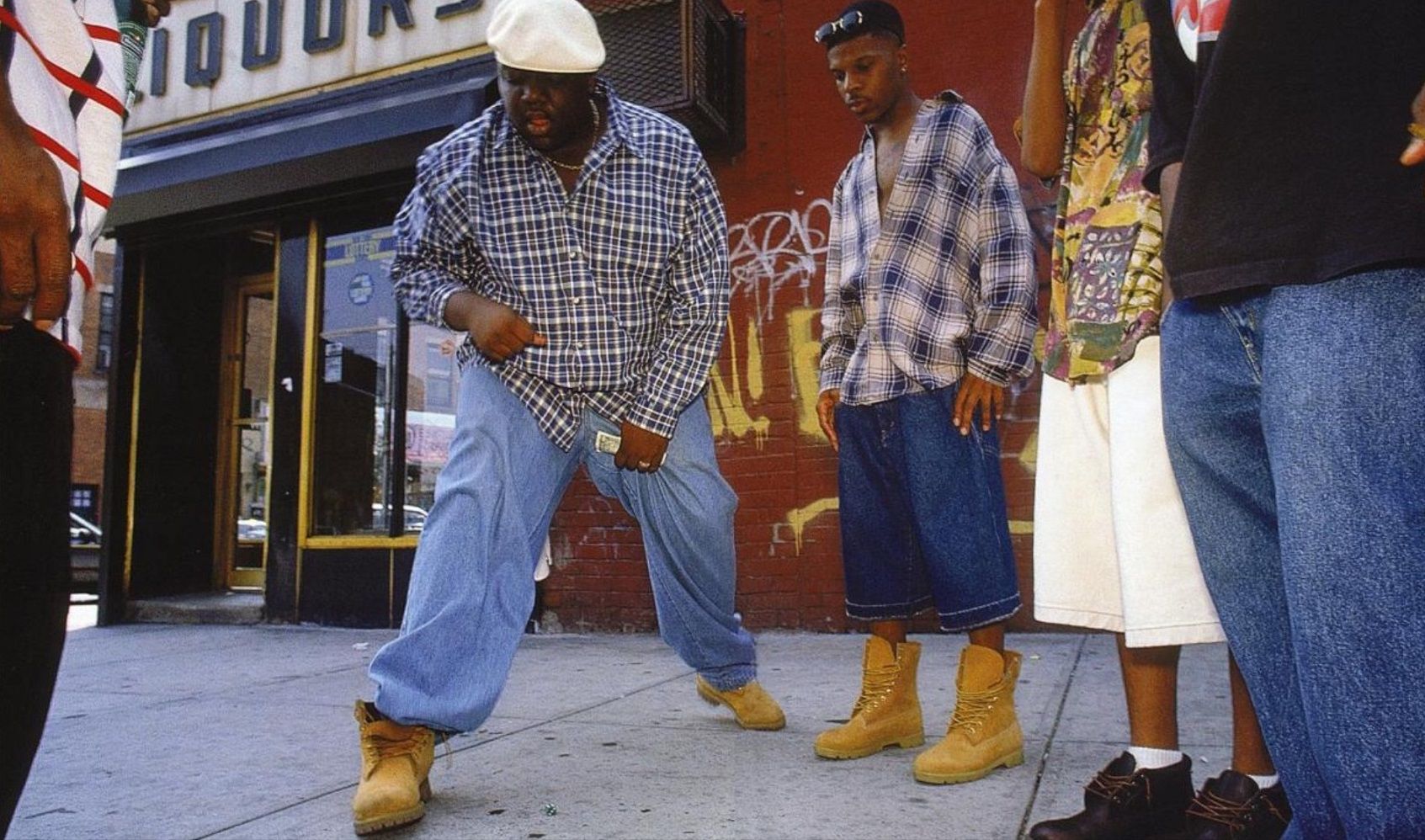THE XXL VINTAGE SPORTSWEAR REVIVAL
The origins of athletic culture and its hip hop beat
Vintage sportswear is back on the streets, and making tracks on the runway. From Vetements outsized hoodies and Gucci track tops to heritage sweaters and vintage shorts - not to mention an adidas Originals and Alexander Wang collaboration - the athleisure renaissance is a game changer.
Pre-noughties, classic sportswear brands collided with hip hop culture, landing at the forefront of cultural radars. Fashion photographer Jamel Shabazz' early work depicted Brooklyn's street and hip hop fashion between the mid 70s and late 80s. His photography perfectly captured the emergence of an empowering urban style inspired by cultural identity and social change.
 Some of Jamal Shabazz's early street style photography from the 80's. Pic credit: Coeval Magazine
Some of Jamal Shabazz's early street style photography from the 80's. Pic credit: Coeval Magazine Pic credit: Coeval Magazine
Pic credit: Coeval MagazineBrooklyn, Harlem, The Bronx and Queens all had their own version of the sportswear look - from Kangol hats to Adidas Gazelles, Lee jeans to velour sweats.
 Pic credit: Coeval Magazine
Pic credit: Coeval MagazineAt the same time, the beat boy culture of the 80s boosted popularity of brands such as Puma, Nike, Fila, Reebok and Adidas, celebrating its associations with inner city culture. The younger generation rejected form-fitting suits once worn in the 70s and cultivated a look which represented them. Clothing was the simplest way to present to the world - much like the Mods in the 60s from working class backgrounds, style was everything.
In the 80s, key influencers in the hip hop scene such as Grandmaster Flash, Run-D.M.C, Big Daddy, The Beastie Boys, Public Enemy and Salt n Pepa brought the look to a wider audience. Think fat laced sneakers, snapback hats, outsize sport sweaters, Starter jackets and XL T Shirts.
 Salt 'N Pepa. Pic credit: Inlander
Salt 'N Pepa. Pic credit: Inlander Run-D.M.C. Pic credit: NY Times
Run-D.M.C. Pic credit: NY TimesReggae culture influences added colour to the mix with reds, greens and yellows, standing out against starker monochrome outfits. Louder colours and print also began to emerge taken directly from the graffiti on the streets.
As the trend moved into the 90s, it was no longer just sportswear brands that were sought after - preppier labels such as Tommy Hilfiger, Polo by Ralph Lauren and Nautica became hugely desirable, along with designer brands like Gucci and Louis Vuitton. These labels were associated with wealth and so became aspirational; wearing them meant success. The bigger the logos, the bolder the print, the more ostentatious, the better. Subtlety was overrated.
Dapper Dan the Hip hop tailor from Harlem, introduced the high-low look by re-appropriating designer logos into eccentric streetwear clothing. These were worn by a host of elite hip-hop artists who also made workwear brands including Timberland and Carhartt suddenly popular - adding an edge to higher-end clothing.
 Dapper Dan with American rapper LL Cool J sporting his custom made Gucci bomber jacket, circa 1986. Pic: The Rake
Dapper Dan with American rapper LL Cool J sporting his custom made Gucci bomber jacket, circa 1986. Pic: The Rake Biggie Smalls wearing Timberland boots in the 90s. Pic credit: Nss Mag
Biggie Smalls wearing Timberland boots in the 90s. Pic credit: Nss MagSportswear affiliation was another huge trend of the time, with the Bronx being home to The New York Yankees and The Oakland Raiders a prominent West Coast team - jerseys and vests were worn outsized and baseball caps were worn under hoodies or flipped backwards.
Michael Jordan's work with Nike in the 90s led them to take over from Adidas's lead the previous decade. Air Jordans became the sneakers of choice and the 90s era versions are now highly collectable.
With the commercial success of MTV, the look became more mainstream. The brand Cross Colours drew inspiration from the street - noticing that jeans were being worn hugely sized up they specifically created baggy jeans with cinched waists.
 Destiny’s Child and Hilfiger pose together at a Macy’s event in the 90s. Pic credit: Billboard
Destiny’s Child and Hilfiger pose together at a Macy’s event in the 90s. Pic credit: BillboardWill Smith embraced the quintessential 90s wardrobe capsule in cult TV show Fresh Prince of Bel-Air. Tupac, Snoop Dogg and the Wu-Tang Clan's also defined the era. They teamed outsized light denim with flamboyant colours, pairing sportswear and silk shirts. All girl groups, including TLC and Aaliyah, gave baggy overalls, dungarees and huge leather jackets a feminine edge, adding fitted crop tops to complete their cool-chic look.
Shop vintage dungarees & overalls
Decades later, 80s and 90s activewear is nostalgic, and ready for contemporary fusion. 90s colourful windbreakers, sportswear and logos are now originals, retro and cool. Form fitting denim and streetwear is worn alongside one statement, outsized piece.
Shop vintage windbreaker jackets
Ultimately the internet has led the way for this with styles from Europe and Japan much more accessible. The look is now worn combined with skate labels and independent brands. A mix of subcultures are emerging and gender and sexuality are embraced, leading to more experimental style.
 A young Jay-Z in the 90s. Pic credit: Complex
A young Jay-Z in the 90s. Pic credit: ComplexPerhaps the biggest evolution in terms of hip hop style is how high fashion has finally embraced the look. Designers such as Jeremy Scott are influenced by hip hop culture, rather than the other way around. Authenticity is always questioned when a look becomes commercially accepted but as Jay -Z has said 'we didn't sell out, we bought the hood to the suburbs' - and now it seems it's time to bring it back into our wardrobes.









